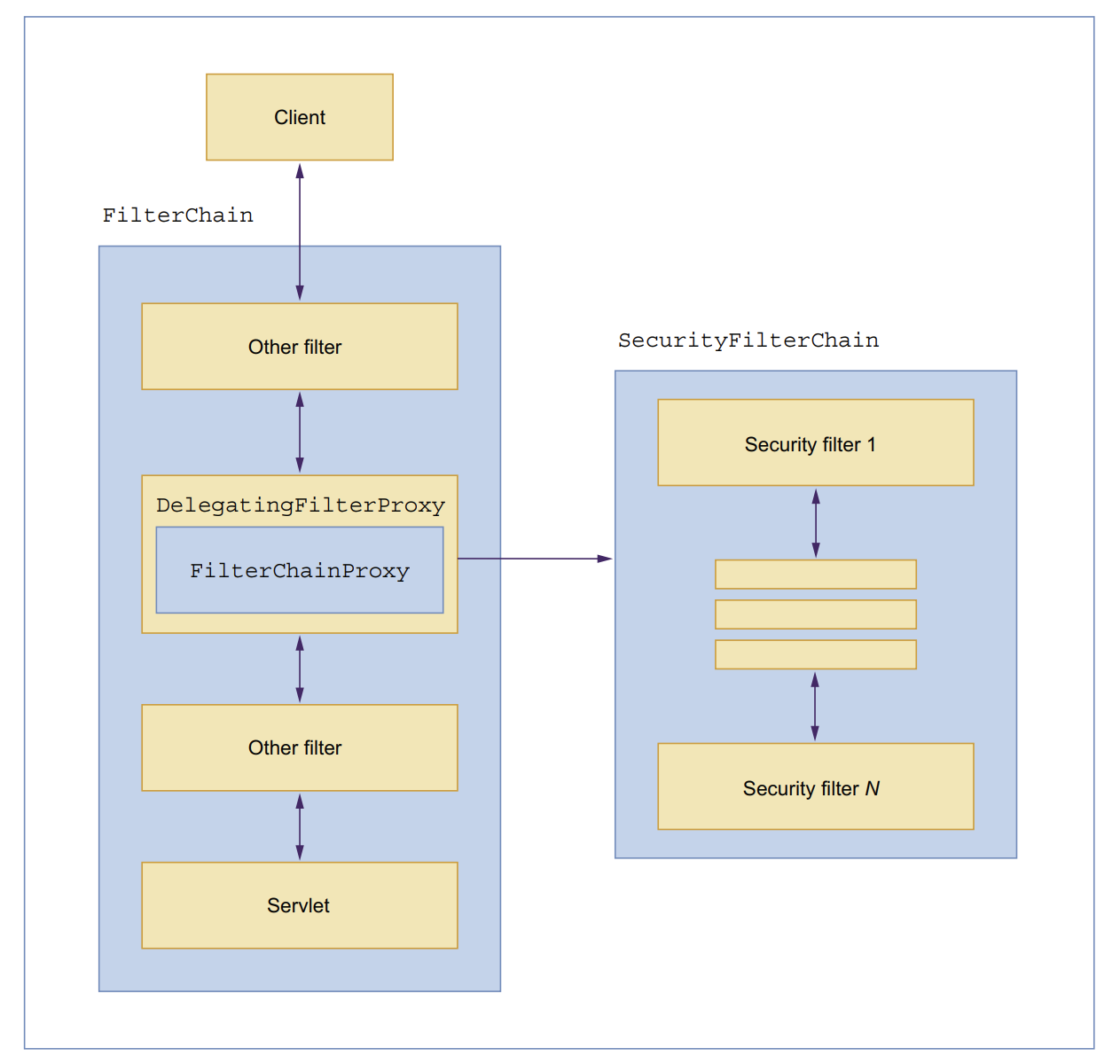Spring Security Servlet Architecture
Overview
In our journey through foundational concepts like Filters and Interceptors, coupled with essential security principles, we are now set to unravel the intricacies of Spring Security’s operational mechanisms.
Spring Security Servlet Architecture
DelegatingFilterProxy
Spring introduces a vital Filter implementation known as DelegatingFilterProxy, bridging the gap between the Servlet container’s lifecycle and Spring’s ApplicationContext.
While the Servlet container registers Filter instances using its own standards, it remains oblivious to Spring-defined Beans.
DelegatingFilterProxy seamlessly integrates by registering through standard Servlet container mechanisms and then deferring all the operational responsibilities to a Spring Bean that implements Filter.
Here’s a simplified breakdown of how it works:
- Registration:
DelegatingFilterProxyis registered using standard Servlet container methods. - Delegation: It looks up a Spring Bean (e.g.,
Filter0) from the ApplicationContext. - Invocation: Calls to
DelegatingFilterProxy’sdoFilter()method are delegated to the specified Spring bean (Filter0).
This mechanism empowers us to leverage all Spring features within our designated Bean Filter0.
FilterChainProxy
Another noteworthy Filter implementation provided by Spring is FilterChainProxy, utilized by DelegatingFilterProxy. It encompasses one or more SecurityFilterChain instances responsible for processing HTTP requests.
The SecurityFilterChain interface includes two key methods: matches(..) and getFilters(..).
The
matches(..)method evaluates whether the currentSecurityFilterChainmatches the incoming request. Spring Security offers theRequestMatcherinterface with various implementations for matching, such asAnyRequestMatcher(matching all HTTP requests) andAntPathRequestMatcher(matching URL paths).If a match occurs, the
getFilters(..)method returns the list of filters to be applied to the incoming request.
When following Spring Security’s default configurations, it sets up a default SecurityFilterChain named DefaultSecurityFilterChain, configuring a predefined list of required filters. This guarantees that all HTTP requests traverse through this filter chain.
Security Filters
The FilterChainProxy has a list of SecurityFilterChain which inturn has a list of Security Filters associated with it. Depending upon the usecases those filters can be used for a number of different purposes ex. authentication, authorization, etc.
The filters are executed in a specific order to guarantee that they are invoked at the right time, ex. The Filter that performs authentication should be invoked before the Filter that performs authorization.
If you want to know more about filter ordering, you can check the FilterOrderRegistration code.
Conclusion
In unraveling Spring Security’s Servlet Architecture, we explored DelegatingFilterProxy and FilterChainProxy, seamlessly integrating Spring’s capabilities into the Servlet container.
The heart of Spring Security lies in its Security Filters, strategically inserted into the FilterChainProxy. These filters handle authentication, authorization, and more, executed in a specific order for optimal functionality.
In summary, Spring Security’s default configurations, exemplified by DefaultSecurityFilterChain, provide a robust and standardized security foundation. Adhering to these defaults ensures well-defined filter chains, enhancing overall application security.
This exploration equips you with essential insights for customizing security configurations within Spring Security’s Servlet Architecture. Consider these concepts as invaluable tools for fortifying your web applications.
